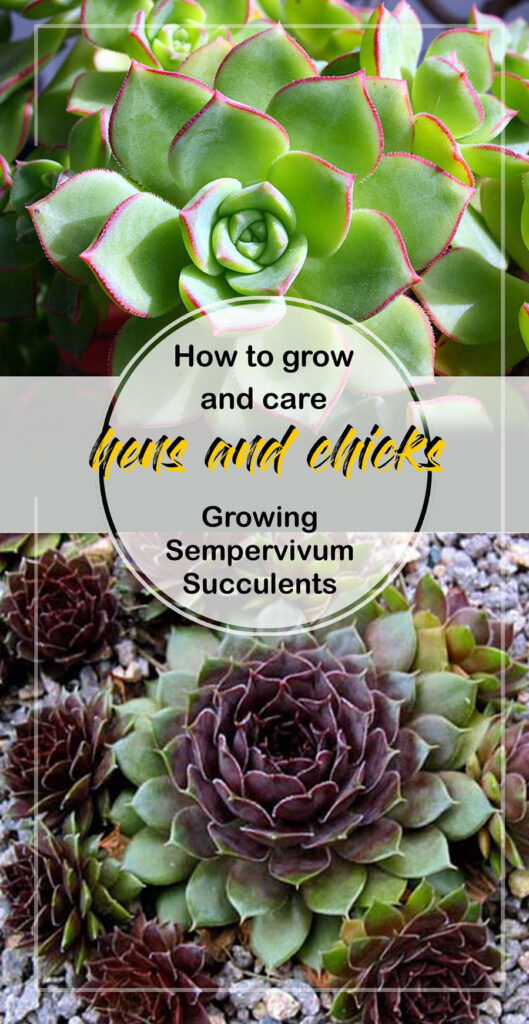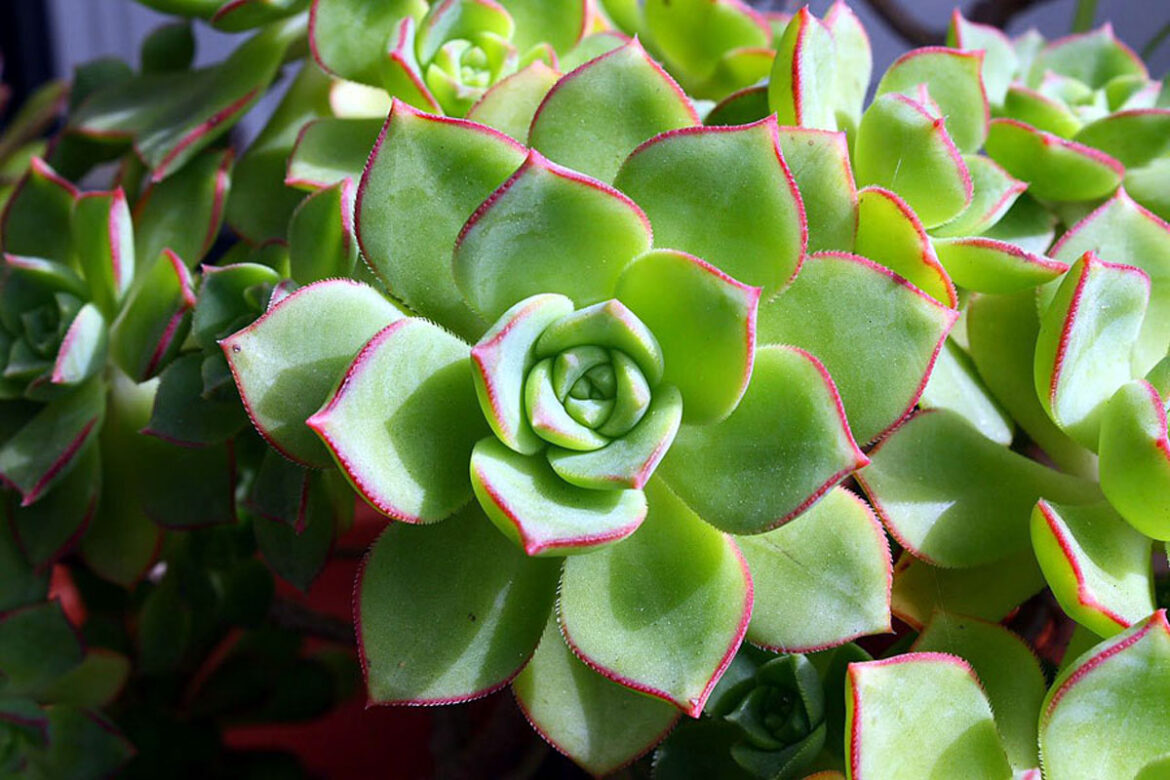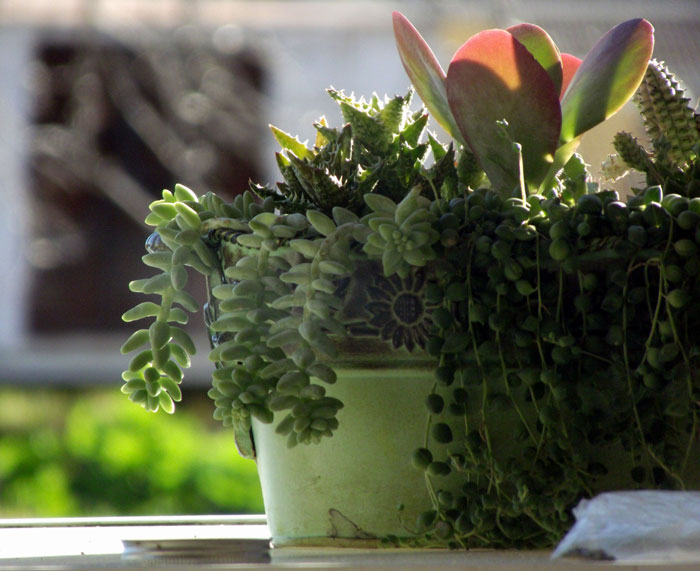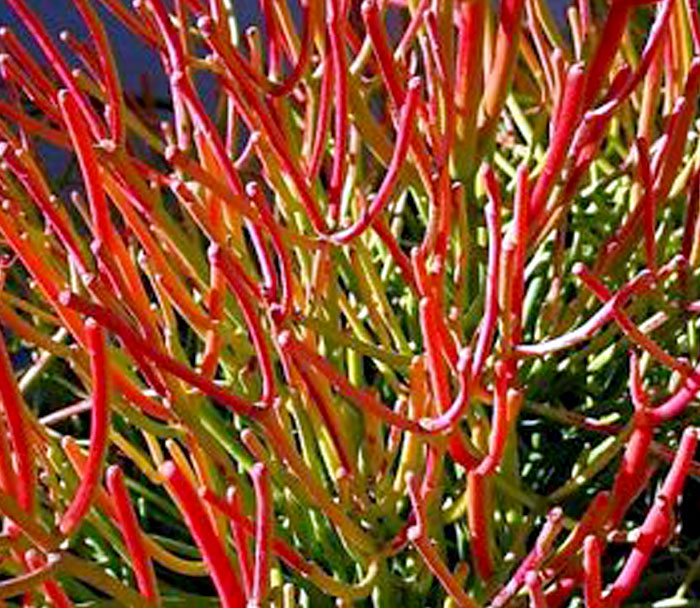Hens and Chicks Plant (Sempervivum Succulents)
The common houseleek, Sempervivum tectorum, is a flowering plant in the Crassulaceae family that is native to the mountains of southern Europe and is cultivated throughout Europe for its appearance and a Roman tradition that claims it protects buildings from lightning strikes. This succulent perennial grows to a height of 15 cm and a width of 50 cm. It forms rosettes and spreads by offsets. The leaves are gray-green, tufted, sessile, and 4–10 cm in diameter. They are often suffused with shocking pink. On hairy flat-topped stems with an erect shape, it bears clusters of reddish-purple flowers in multiples of 8–16 during the summer.
There are many common names and traditions associated with this plant that has been passed down from generation to generation. As well as houseleek, there are numerous other names for it, such as: bullock’s beard, devil’s beard, earwort, fuet, healing blade, homewort, imbroke, Jove’s beard, Jupiter’s eye, poor Jan’s leaf, red-leaved houseleek, and roof foil.
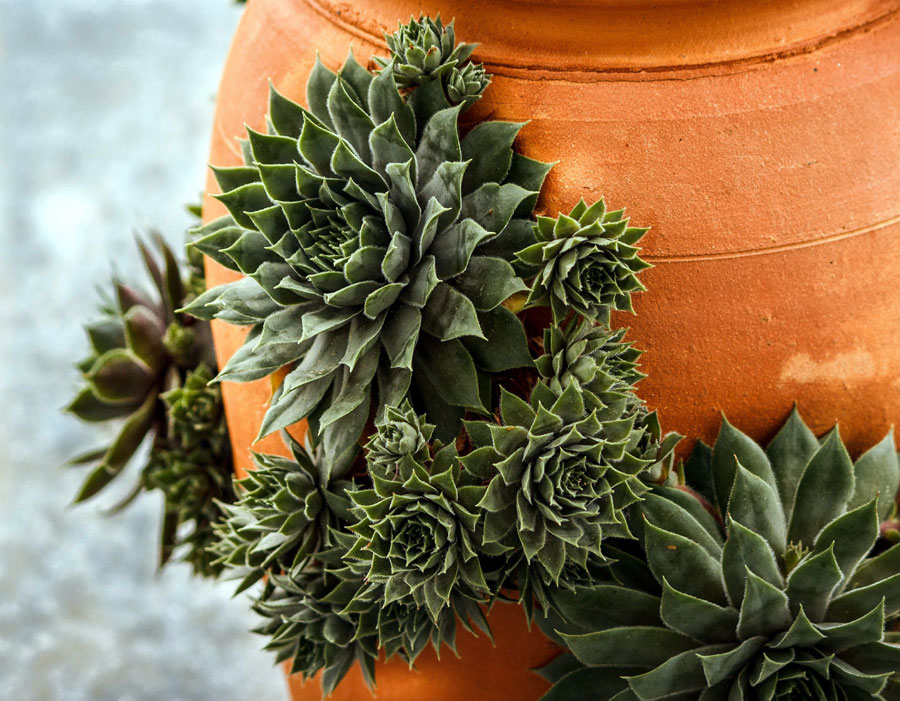
Overview of the Sempervivum plant
Scientific name Sempervivum tectorum
Common name Hens and Chick, bullock’s beard, devil’s beard, earwort, fuet, healing blade, homewort, imbroke, Sempervivum.
Plant type Succulent
Sun requires Full Sunlight
Soil well-drained sandy soil
Soil pH 6.6 -7.5
Zone 3-11
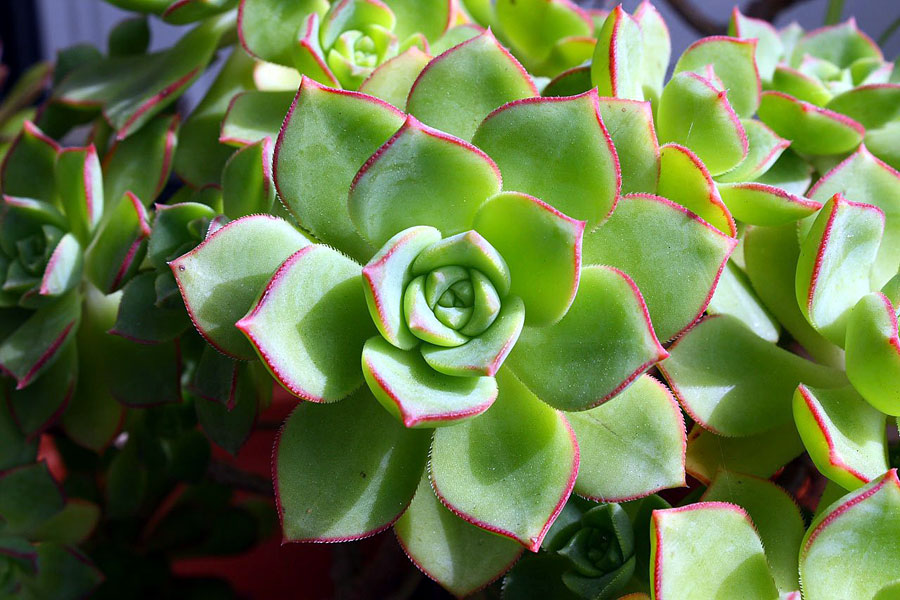
How to Grow and Care Hens and Chick (House Leek) Plant
Hens and chicks are relatively quick to grow and do their best when planted in spring, but if you’d like to start new plants from seed, you may want to start the seeds indoors in the fall so that they’ll be ready to plant in the spring.
Growing from seeds
The seeds produced by mature plants that bear flowers can also be used to grow hens and chicks. The seeds can be collected from the pods left over after the flowers fade, and then sprinkled over cactus or succulent potting mix. You should see sprouts within three weeks after lightly moistening the mix and placing the pot in a bright location. Add some fine gravel and mulch once sprouts appear. A temperature of 70 degrees Fahrenheit and light are required for seeds to germinate. You should put the pots in the refrigerator for 2 to 4 weeks if they fail to germinate after 4 to 5 weeks and repeat the sun and temperature conditions.
Growing from Cuttings
The offsets of a hen and chicks plant can be propagated by splitting them apart, preserving their roots if possible. Create a shallow hole with a trowel and transplant the offsets into well-drained soil. Compact the soil around the roots and replace the soil up to the crown of the plant. A light watering can be given to the offset, but the new plant should be left to dry out between waterings. In ideal conditions, the plants will spread on their own.
Sunlight
House Leek enjoys being around bright, sunny windows. The ideal situation for growing hens and chick plants is full sun (at least six hours daily). This will ensure that the foliage is as colorful as possible and that offsets are plentiful.
Soil
The common houseleek needs excellent drainage, as do most succulents. Poor, sandy soil is fine for them. The healthiest succulents grow in free-draining soil that contains at least 30 percent grit or sand. To lighten heavy soils and improve drainage, work some peat into them. Growing succulents and cacti in containers requires a potting mix formulated for succulents. A neutral pH range of 6.6 to 7.5 is ideal for them.
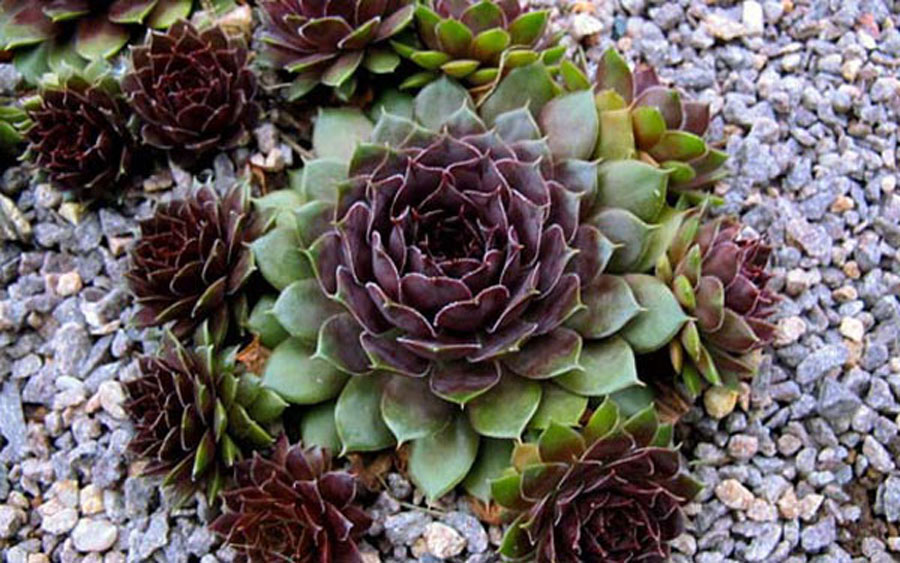
Watering
Water the plant only once a week and let their roots dry between watering. Perennial hens and chicks plant can withstand going weeks without water, as they are drought-tolerant. Water newly transplanted plants enough to help them get established, but do not over-water them once they have been established.
Temperature and Humidity
Common houseleeks prefer temperatures between 65 and 75 degrees Fahrenheit. When temperatures drop too low, they do not necessarily die off, but will definitely cease to grow and become dormant.
Plants like the hens and chicks plant tolerate a wide range of humidity levels and can be grown in dry climates.
Fertilizer
This ground cover will thrive in poor soils, so there is no need to fertilize hens and chicks plants. At the beginning of the growing season, fertilize sempervivum with a controlled-release fertilizer. Using a 20-20-20 fertilizer at a quarter of the original strength, you can fertilize it once per week with a liquid solution. When fertilizing young plants, mix less nitrogen into the fertilizer.
Read also
How to grow succulents in containers. How to grow and care about Blue chalk stick. 9 Houseplants you can totally neglect. Growing and care tips of Cantaloupe. Growing Pansy flowers at your terrace garden. Cineraria growing at containers. Onions growing and care tips. Microgreens growing at home. 5 best indoor succulents.
For pin:
